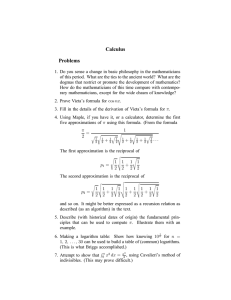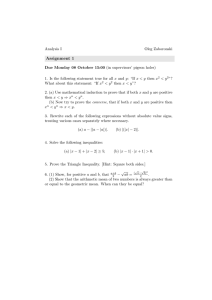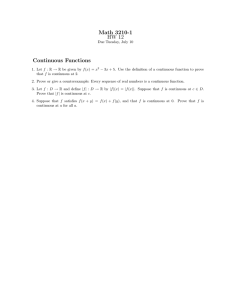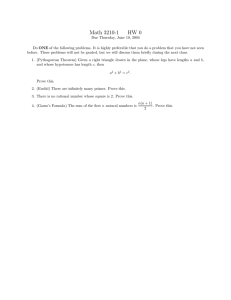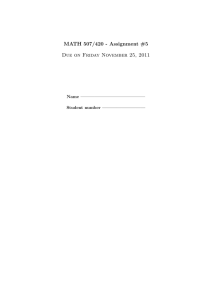Sources and Statistics Writing Center TIPS
advertisement
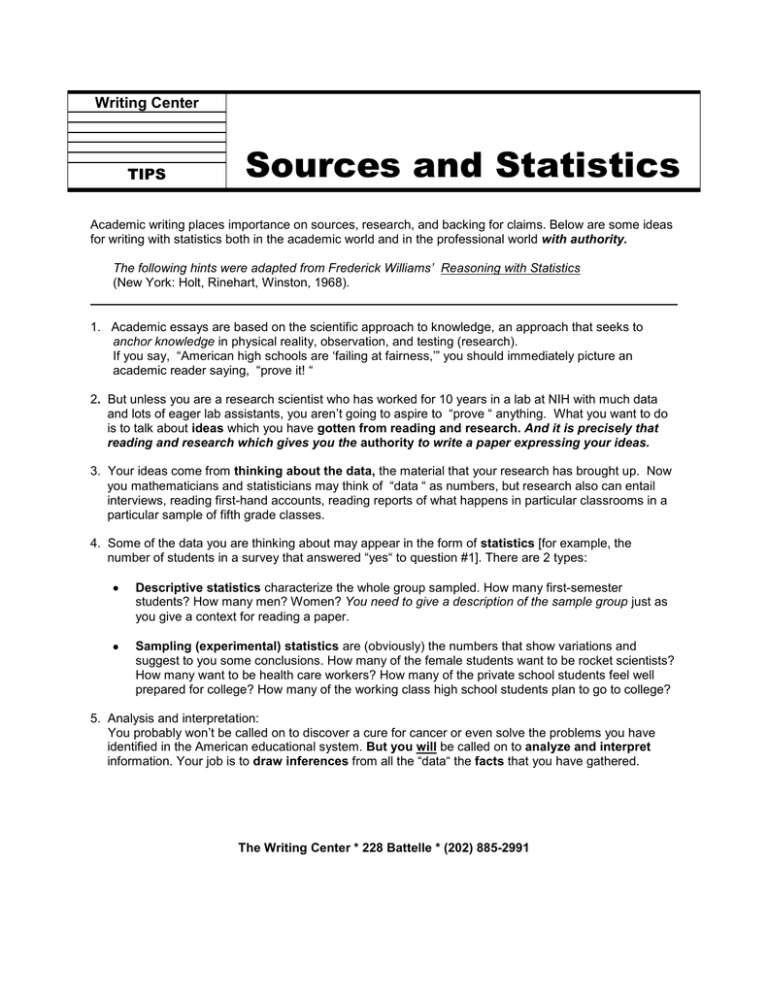
Writing Center TIPS Sources and Statistics Academic writing places importance on sources, research, and backing for claims. Below are some ideas for writing with statistics both in the academic world and in the professional world with authority. The following hints were adapted from Frederick Williams’ Reasoning with Statistics (New York: Holt, Rinehart, Winston, 1968). 1. Academic essays are based on the scientific approach to knowledge, an approach that seeks to anchor knowledge in physical reality, observation, and testing (research). If you say, “American high schools are „failing at fairness,‟” you should immediately picture an academic reader saying, “prove it! “ 2. But unless you are a research scientist who has worked for 10 years in a lab at NIH with much data and lots of eager lab assistants, you aren‟t going to aspire to “prove “ anything. What you want to do is to talk about ideas which you have gotten from reading and research. And it is precisely that reading and research which gives you the authority to write a paper expressing your ideas. 3. Your ideas come from thinking about the data, the material that your research has brought up. Now you mathematicians and statisticians may think of “data “ as numbers, but research also can entail interviews, reading first-hand accounts, reading reports of what happens in particular classrooms in a particular sample of fifth grade classes. 4. Some of the data you are thinking about may appear in the form of statistics [for example, the number of students in a survey that answered “yes“ to question #1]. There are 2 types: Descriptive statistics characterize the whole group sampled. How many first-semester students? How many men? Women? You need to give a description of the sample group just as you give a context for reading a paper. Sampling (experimental) statistics are (obviously) the numbers that show variations and suggest to you some conclusions. How many of the female students want to be rocket scientists? How many want to be health care workers? How many of the private school students feel well prepared for college? How many of the working class high school students plan to go to college? 5. Analysis and interpretation: You probably won‟t be called on to discover a cure for cancer or even solve the problems you have identified in the American educational system. But you will be called on to analyze and interpret information. Your job is to draw inferences from all the “data“ the facts that you have gathered. The Writing Center * 228 Battelle * (202) 885-2991

